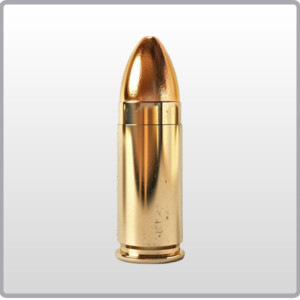Ammunition plays a crucial role in the functionality of firearms, serving as the fuel that powers weapons. Understanding ammunition, its types, and its components is essential for anyone involved in shooting sports, hunting, or even self-defense. In this article, we’ll explore the basics of ammunition, how it works, and the different types available.
What is Ammunition?
Ammunition refers to the projectiles and explosive materials that are used in firearms. It typically consists of four main components: the bullet, casing, powder, and primer. Each part plays a specific role in firing the weapon:
- Bullet: The actual projectile that is fired from the gun.
- Casing: Holds the components of the ammunition together.
- Powder: Provides the necessary energy to propel the bullet forward.
- Primer: Ignites the powder to generate the explosion that pushes the bullet out of the gun.
Types of Ammunition
There are many types of ammunition, each designed for specific purposes. Let’s take a closer look at some of the most common types.
- Handgun Ammunition Handgun ammunition is designed for short-barrel firearms like pistols and revolvers. Common calibers include 9mm, .45 ACP, and .40 S&W. These rounds are typically used for self-defense, target shooting, and law enforcement.
- Rifle Ammunition Rifle ammunition is designed for long-barrel firearms and is commonly used in hunting and military applications. Popular calibers include .223 Remington, .308 Winchester, and 7.62x39mm.
- Shotgun Ammunition Shotguns fire shells instead of traditional bullets. Shotgun ammunition is categorized by gauge rather than caliber, with 12-gauge being the most popular. Shotgun shells contain multiple pellets or slugs, making them effective for hunting birds and small game.
- Specialty Ammunition There are also specialty ammunition types designed for specific tasks, such as armor-piercing rounds, tracer rounds, and blank ammunition. These are used in various military and law enforcement scenarios or for training purposes.
Ammunition Safety
Handling ammunition requires care and attention to safety protocols. Always store ammunition in a cool, dry place, away from heat and moisture. Follow proper loading and unloading procedures to prevent accidents. Be sure to use the correct ammunition type for your firearm, as using the wrong caliber can cause serious damage.
Choosing the Right Ammunition
When selecting ammunition, it’s important to consider the purpose. Are you planning to hunt, target shoot, or use it for personal defense? For hunting, you might opt for higher-powered rifle rounds, while for self-defense, hollow-point handgun rounds are often preferred for their stopping power. Make sure to consult your firearm’s manual to determine which type of ammunition is compatible with your gun.
Conclusion
Ammunition is a fundamental part of firearm operation. Whether you’re a hunter, target shooter, or someone interested in personal safety, knowing the basics of ammunition can help you make informed choices about the type of rounds you use. By understanding ammunition types, components, and safety measures, you can enhance your shooting experience and stay safe while doing so.










